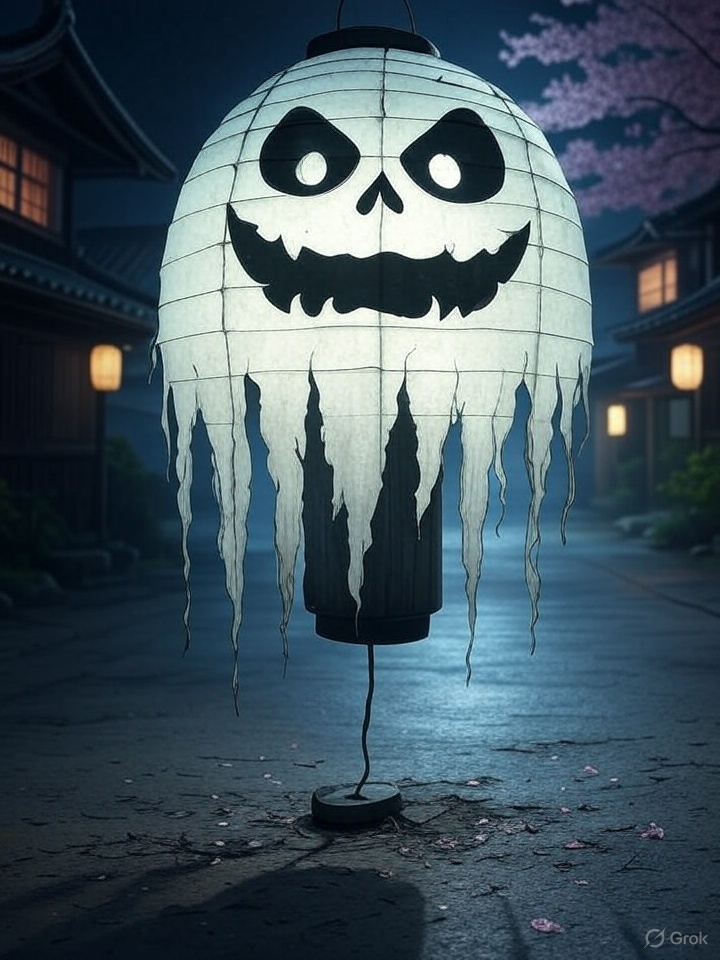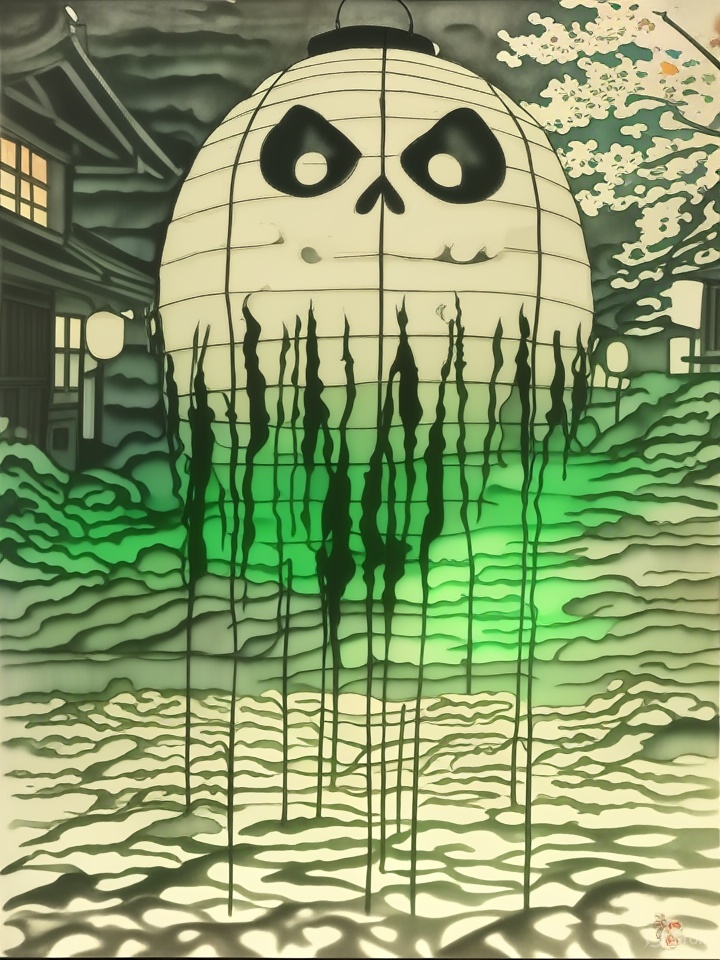Name Meaning
Overview
\n
Chōchinobake (提灯お化け) means “Haunted Lantern” in Japanese. It refers to a yokai formed when an old or neglected paper lantern gains a spirit of its own and comes to life.
- Chōchin = Paper lantern
- Obake = Thing that transforms / ghost
Origin
- Part of the tsukumogami — tools or objects that come alive after reaching 100 years of age.
- Seen in Edo period ghost illustrations and kabuki plays as both spooky and humorous figures.
Appearance
- Typically shown as a tattered paper lantern with one large eye and a long, curling tongue.
- Sometimes has arms or legs, floating eerily through the night.
- Glows from within, flickering like a candle in the dark.
Behavior & Myths
- Appears suddenly in dark corridors or alleys to scare unsuspecting passersby.
- Usually more mischievous than dangerous — it enjoys startling people but rarely causes harm.
- May be seen in festivals or ghost story nights as a classic yokai image.
Symbolism
- Represents forgotten or discarded tools seeking recognition.
- A reminder to respect even everyday objects, as they may carry spiritual presence.
- Blurs the line between the mundane and the supernatural.



